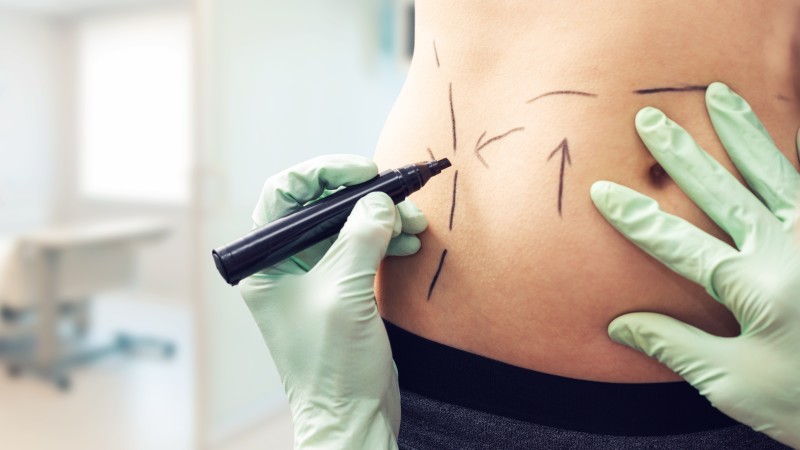Would your patient risk their life for the ‘perfect’ body?
MDlinx Oct 04, 2023
Every year, approximately 15 million cosmetic procedures are performed in the US, according to the American Society of Plastic Surgeons (ASPS).
2020 Plastic Surgery Statistics Report. American Society of Plastic Surgeons. 2020.
As with any surgical intervention, plastic surgery carries risk.

Making sure that your patients are safe during cosmetic surgery is imperative, and physicians should advise their patients on the potential repercussions of these three popular cosmetic surgeries.
Assess your patient’s risk tolerance
Researchers writing in Plastic and Reconstructive Surgery (PRS) Global Open note that abdominoplasty may be particularly risky, more so than the Brazilian butt lift (known colloquially as BBL), facelifts, rhinoplasty, or surgeries that combine multiple procedures.
Rohrich RJ, Savetsky IL, Avashia YJ. Assessing cosmetic surgery safety: the evolving data. Plast Reconstr Surg Glob Open. 2020;8(5):e2643.
“Every complication poses a challenge for the plastic surgeon and puts the patient-doctor relationship at risk,” caution the authors of a review published in Archives of Plastic Surgery.
Vidal P, Berner JE, Will PA. Managing complications in abdominoplasty: a literature review. Arch Plast Surg. 2017;44(5):457–468.
“This has a special relevance for aesthetic procedures, because these are generally elective procedures undergone by healthy patients whose expectations can be ruined by a subsequent complication.”
Abdominoplasty
Abdominoplasty (AKA “tummy tuck”) carries the highest risk of mortality, with 1 death for every 10,000-13,000 procedures, as reported in PRS Global Open.
The rate of venous thromboembolism (VTE), a major complication, is 0.4%, whereas the risk of minor complications including hematoma and infection is 2% and 2% to 7%, respectively.
The aim of abdominoplasty is to recontour the body by resecting excess skin and fat tissue to reshape the abdominal wall. Contemporary techniques, explain the authors of the Archives of Plastic Surgery review, comprise limited dissection of the abdominal flap, plication of the rectus abdominis fascia, and resection of a segment of skin and underlying subdermal tissue down to the level of the Scarpa’s fascia.
Of note, abdominoplasty is often combined with liposuction (ie, lipoabdominoplasty). This leads to higher satisfaction rates among some patients and has become a common procedure, despite initial concerns over an increase in the risk of flap necrosis.
Brazilian butt lift
Buttock augmentation with fat grafting—referred to as a Brazilian butt lift (BBL)—has become increasingly popular in the US. In 2018, there was a 15.8% increase in these procedures vs 2017, according to figures cited in PRS Global Open. With increased incidence come concerns over safety.
In 2015, a group of Mexican and Colombian surgeons reported 14 intra-operative deaths during lipoinjection, as well as 8 perioperative deaths.
Results from a 2017 study found that mortality secondary to gluteal fat grafting ranged between 1 death per 2,351 and 1 per 6,214 procedures, based on an international survey of 4,843 plastic surgeons.
A survey distributed among members of the ASPS and the International Society of Aesthetic Plastic Surgery assessed fat embolism and deaths related to gluteal fat grafting during the prior 24-month period. This survey was conducted after a strong recommendation that BBLs be performed using only subcutaneous fat augmentation. Overall, the mortality rate was 1:14,921, which was lower than that of abdominoplasty.
Liposuction
Liposuction emerged in the 1980s, and its introduction immediately triggered concerns over patient safety and unacceptable rates of mortality. The article in PRS Global Open states that these high rates were secondary to massive blood loss in high-volume liposuction with prolonged operative time, as well as to thromboembolism, pulmonary edema, and abdominal/viscus perforation.
Subsequently, the ASPS formed a task force to assess patient safety during these procedures.
“The fluid status of patients was mismanaged, resulting in both under- and over-resuscitation,” wrote the PRS Global Open authors. “With the advent of the superwet technique over tumescent liposuction, and proper training of board-certified plastic surgeons, the mortality rate dropped drastically.”
As for other complications, there’s a 0.15% risk of hematoma; 0.10% risk of infection; and <0.1% risk of VTE. The current risk of mortality is 1.3:50,000.
Advising your patients
The authors writing in PRS Global Open said that cosmetic surgery is safe when performed by a board-certified plastic surgeon at an accredited facility.
Additional guidance includes the following:
-
Patients who smoke should not receive plastic surgery due to higher complication rates.
-
Patients should have realistic expectations about what can and can’t be accomplished with plastic surgery.
-
Complex combination procedures that are more than 6 hours should be avoided due to increased risk of complications.
As for surgeons, the authors recommend the following: “Always strive to deliver the best and safest care in and out of the OR and never leave the OR until the patient looks as good as they can within the best of your abilities.”
What this means for you
Regardless of specialty, all physicians will come into contact with a patient who is interested in cosmetic surgery—any physician can help advise their patients on the expectations and risks of cosmetic procedures. The three common surgeries that pose a mortality risk are abdominoplasty, BBL, and liposuction, in that order. Keep in mind that smokers are not good candidates for plastic surgery, and complex procedures with an operative time of over 6 hours are best avoided.
-
Exclusive Write-ups & Webinars by KOLs
-
Daily Quiz by specialty
-
Paid Market Research Surveys
-
Case discussions, News & Journals' summaries